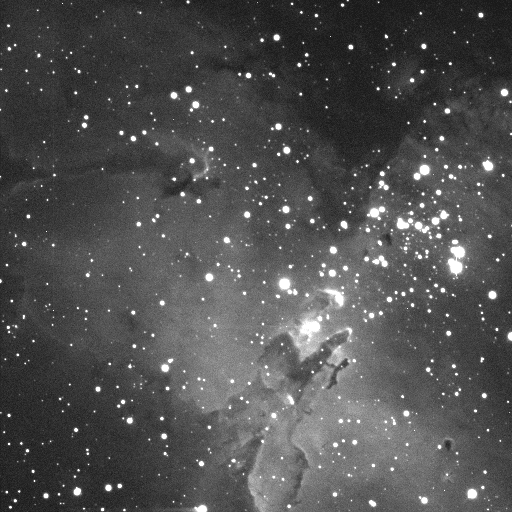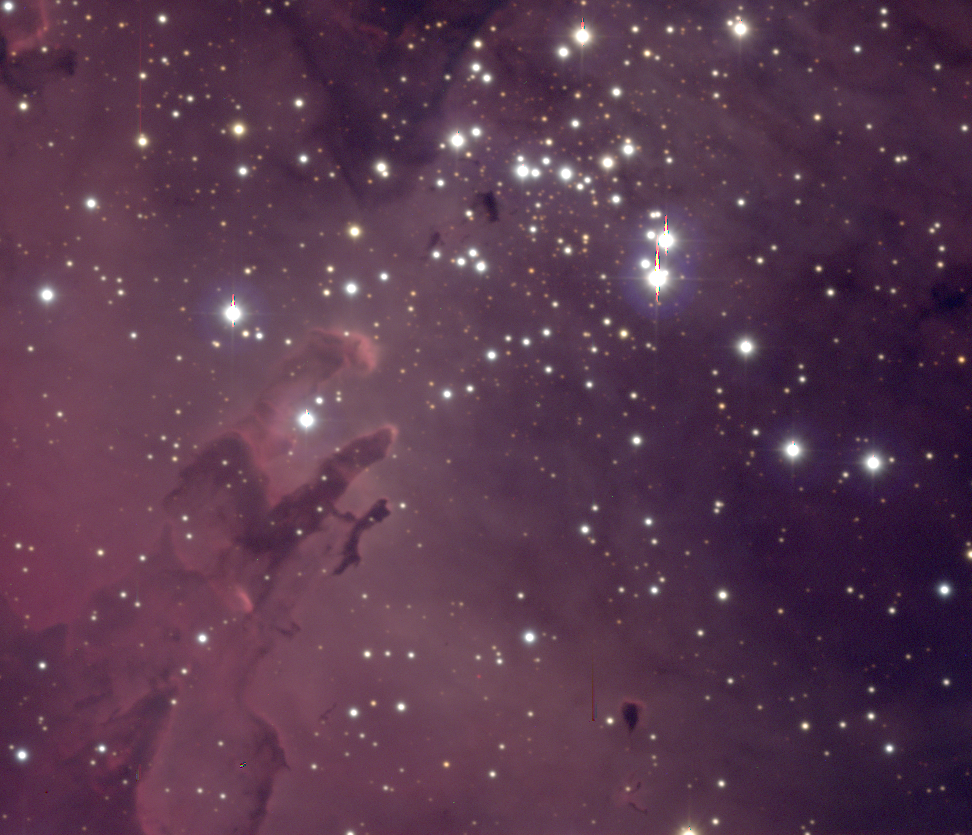

The gaseous nebula (H II region) Messier 16 (NGC 6611) in Serpens, shown from a 30-second red-light exposure (through clouds) with a Tektronix 2048x2048 CCD at the prime focus of the 4-meter Mayall telescope of Kitt Peak National Observatory. North is at the top and east to the left, for direct comparison with a chart or eyepiece view. The image has been block-averaged to 512x512 for this presentation, which uses a logarithmic intensity transformation to preserve information across a wide dynamic range. The field is 14.3 arcminutes square.
M16 is an especially photogenic example of a young star cluster, still surrounded by its embryonic gas cloud which is partly ionized by the deep ultraviolet radiation from the most massive young stars. Some of the denser molecular gas may be seen around the periphery due to its association with absorbing dust, especially obvious in the three "pillars" near the center which were seen so spectacularly in the famous HST imagery of M16. Those data led to the identification of an important role for photodissociation in limiting star formation in regions such as this; the intense UV radiation erodes surrounding gas away before much lower-mass stars can complete their formation.
Additional detail is shown in this BVR color-composite from the 1-meter Jacobus Kapteyn Telescope (JKT) operated by the SARA consortium on the island of La Palma. The nebula itself appears mostly red because of the strehgth of Hα emission.

For a wider context, this 2-field red-light mosaic taken with the University of Alabama Crimson Dragon wide-field imaging system shows both M16 (at the top) and M17.

Last changes: 9/2018 © 2001-2018